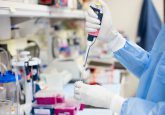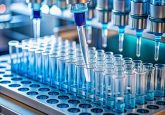‘Lab on a finger’ tool could be used for forensics

‘Forensic Finger’ developed, demonstrating capability for rapid, on-the-spot detection of gunshot residues.
In a recent paper in Analyst, a group of researchers from the Department of Nanoengineering at the University of California present a new device for field-deployable detection of gunshot residue. The device, termed ‘forensic fingers’ exploits concepts of voltammetry – in which analytes are detected by the current they generate.
The system integrates both sampling and detection; one on each of the two plastic finger coverings, which are worn on the thumb and index finger. The sample is collected on the index finger; which contains three electrodes. This is then pressed against electrolyte gel found on the thumb piece – thus creating an electrochemical cell. Any gunshot residue present will then, after undergoing redox reactions, produce a current to be detected by an electrochemical analyzer.
The team tested their device at a firing range and demonstrated that it could detect gunshot residues within 4 minutes. Advantages of the system are described; including the fact that the solid electrolyte gel circumvents any disadvantages of liquid handling. In addition, the team highlights the ease-of-use and speed of the system, envisaging the device being used on-site for crime scene investigations.
Future work will involve making the technology more convenient – the researchers are planning a system where the device is integrated into a wristwatch or ring; whilst the results are sent wirelessly to a smartphone.
Source: Bandodkar AJ, O’Mahony AM, Ramírez J et al. Solid-state Forensic Finger sensor for integrated sampling and detection of gunshot residue and explosives: towards ‘Lab-on-a-finger’. Analyst. 138, 5288–5295 (2013).




